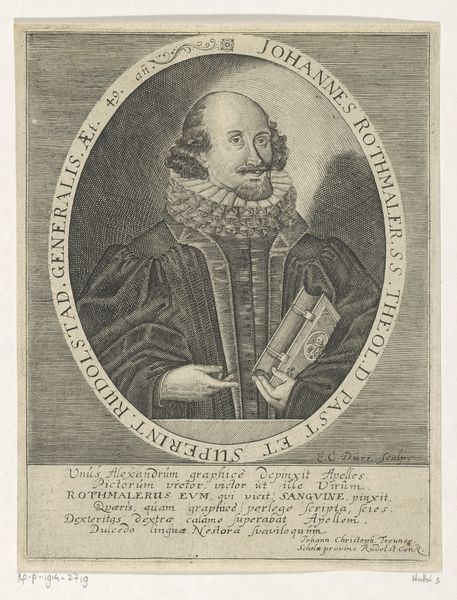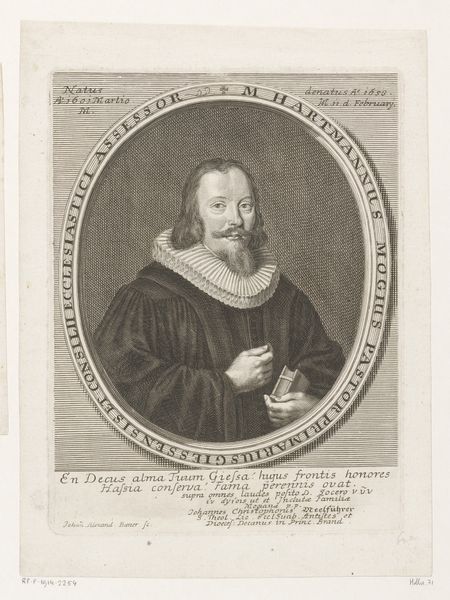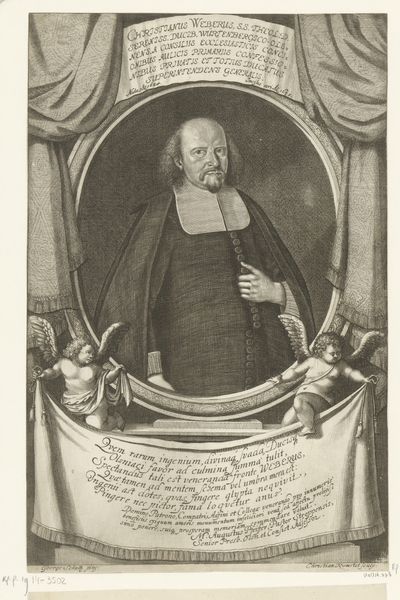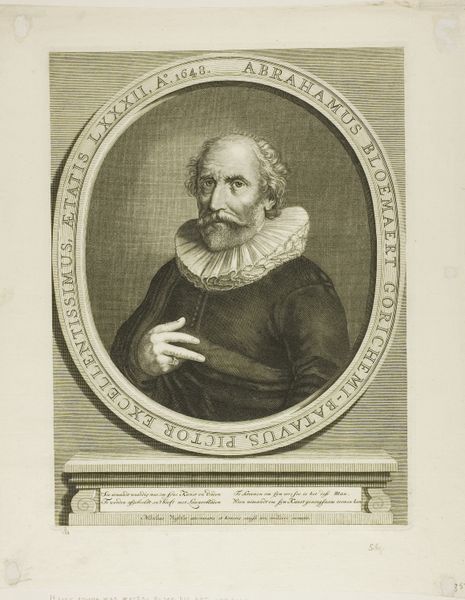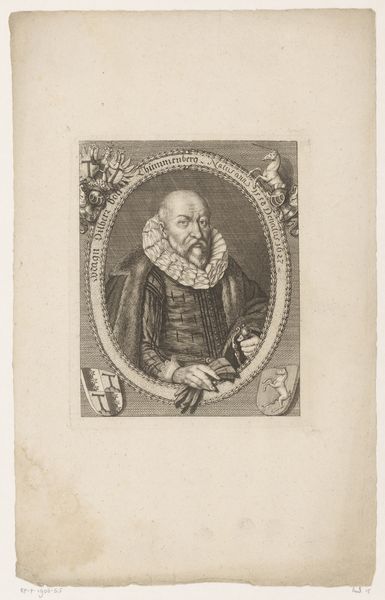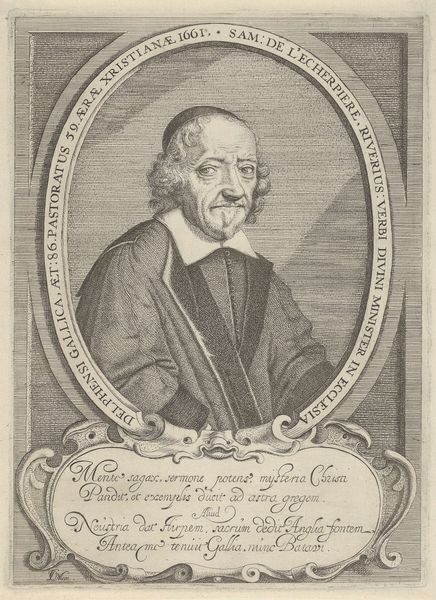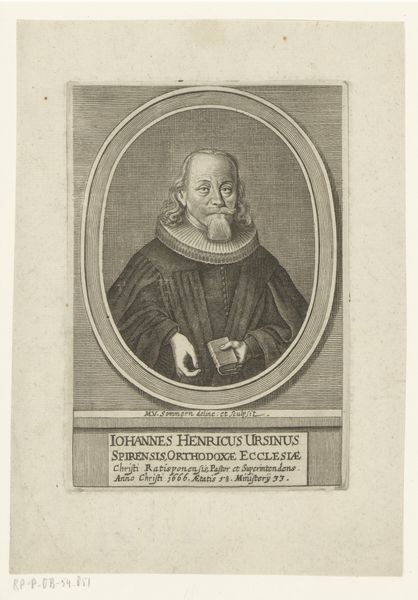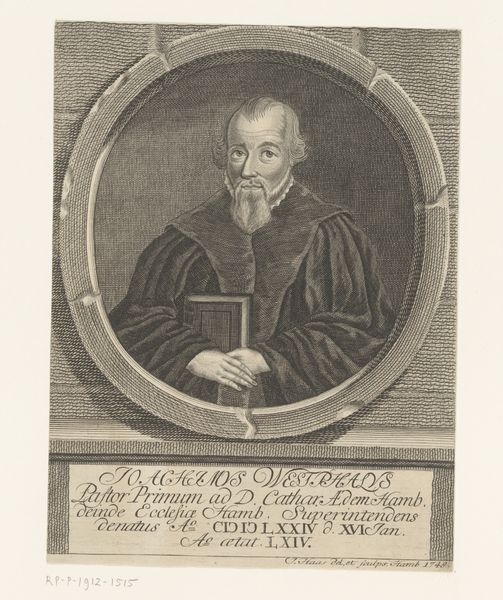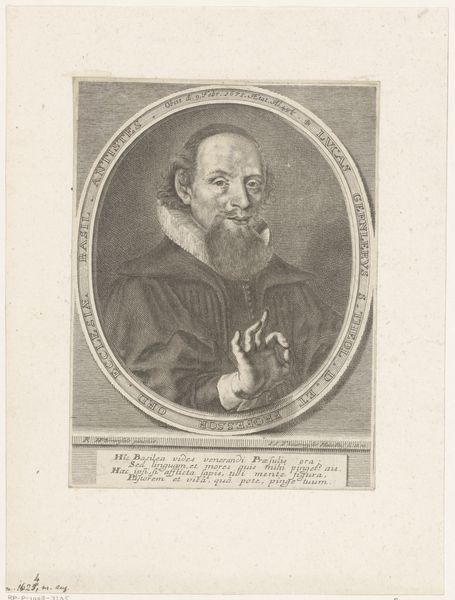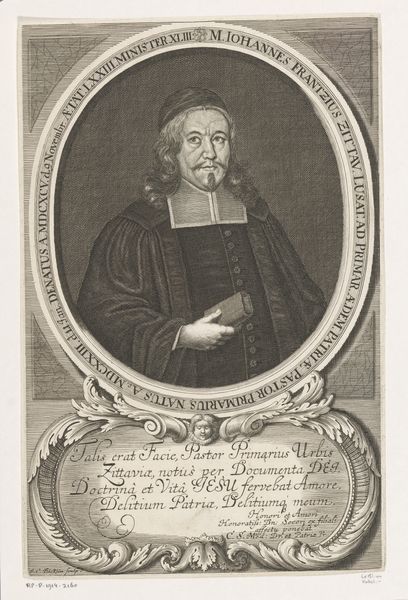
metal, engraving
#
portrait
#
baroque
#
metal
#
old engraving style
#
history-painting
#
engraving
Dimensions: height 275 mm, width 172 mm
Copyright: Rijks Museum: Open Domain
Editor: Here we have a 17th-century engraving, "Portret van Thomas Werlien," by Heinrich Jakob Otto. It’s quite striking, in a very reserved and official way. The detail is amazing, and his expression seems very stern. What do you see in this piece that I might be missing? Curator: Ah, Thomas Werlien. I feel as though I know him already! Look at that crisp collar, like spun sugar defending a fortress. One immediately feels a weight of responsibility. Doesn’t the meticulous rendering suggest not just a likeness, but an embodiment of societal order? And what about the little emblem below – his coat of arms, I presume. Think of it as his personal brand, declaring, "This is who I am, and I approve this message." What does it say to you? Editor: It’s certainly grand, with all those heraldic symbols. So, the artist is not just showing us what he looks like, but telling us who he is through symbols? Curator: Precisely! Every line in an engraving has a meaning, every shadow carefully placed to illuminate not just a face, but an era, a belief, a statement. The piece invites us to consider the interplay of image and identity in 17th century portraiture. What are the values of Thomas Werlien? Editor: I never thought about it that way before; you made me really see how a portrait can "speak"! I am curious to do more research now. Curator: Excellent! The language of art rewards exploration. Happy to nudge you closer to its heart!
Comments
No comments
Be the first to comment and join the conversation on the ultimate creative platform.

